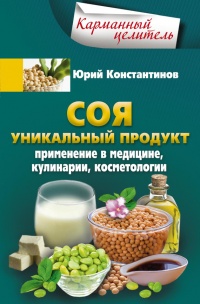Читать книгу "Эффект теломер. Революционный подход к более молодой, здоровой и долгой жизни - Элисса Эпель"
Шрифт:
Интервал:
Закладка:
9. Sarkar M., Fletcher D., Brown, D. J., “What doesn’t kill me…: Adversity-Related Experiences Are Vital in the Development of Superior Olympic Performance,” Journal of Science in Medicine and Sport (July 2015). 18 (4): 475–9. doi:10.1016/j.jsams.2014.06.010.
10. Epel, E., et al., “Can Meditation Slow Rate of Cellular Aging? Cognitive Stress, Mindfulness, and Telomeres,” Annals of the New York Academy of Sciences 1172 (August 2009): 34–53, doi:10.1111/j.1749-6632.2009.04414.x.
11. McLaughlin, K. A., M. A. Sheridan, S. Alves, and W. B. Mendes, “Child Maltreatment and Autonomic Nervous System Reactivity: Identifying Dysregulated Stress Reactivity Patterns by Using the Biopsychosocial Model of Challenge and Threat,” Psychosomatic Medicine 76, no. 7 (September 2014): 538–546, doi:10.1097/PSY.0000000000000098.
12. O’Donovan et al., “Stress Appraisals and Cellular Aging: A Key Role for Anticipatory Threat in the Relationship Between Psychological Stress and Telomere Length.” (See #6 above.)
13. Barrett, L., How Emotions Are Made (New York: Houghton Mifflin Harcourt, in press).
14. Ibid.
15. Jamieson, J. P., W. B. Mendes, E. Blackstock, and T. Schmader, “Turning the Knots in Your Stomach into Bows: Reappraising Arousal Improves Performance on the GRE,” Journal of Experimental Social Psychology 46, no. 1 (January 2010): 208–212.
16. Beltzer, M. L, M. K. Nock, B. J. Peters, and J. P. Jamieson, “Rethinking Butterflies: The Affective, Physiological, and Performance Effects of Reappraising Arousal During Social Evaluation,” Emotion 14, no. 4 (August 2014): 761–768, doi:10.1037/a0036326.
17. Waugh, C. E., S. Panage, W. B. Mendes, and I. H. Gotlib, “Cardiovascular and Affective Recovery from Anticipatory Threat,” Biological Psychology 84, no. 2 (May 2010): 169–175, doi:10.1016/j.biopsycho.2010.01.010; and Lutz, A., et al., “Altered Anterior Insula Activation During Anticipation and Experience of Painful Stimuli in Expert Meditators,” NeuroImage 64 (January 1, 2013): 538–546, doi:10.1016/j.neuroimage.2012.09.030.
18. Herborn, K.A., et al., “Stress Exposure in Early Post-Natal Life Reduces Telomere Length: An Experimental Demonstration in a Long-Lived Seabird,” Proceedings of the Royal Society B: Biological Sciences 281, no. 1782 (March 19, 2014): 20133151, doi:10.1098/rspb.2013.3151.
19. Aydinonat, D., et al., “Social Isolation Shortens Telomeres in African Grey Parrots (Psittacus erithacus erithacus),” PLOS ONE 9, no. 4 (2014): e93839, doi:10.1371/journal.pone.0093839.
20. Gouin, J. – P., L. Hantsoo, and J. K. Kiecolt-Glaser, “Immune Dysregulation and Chronic Stress Among Older Adults: A Review,” Neuroimmunomodulation 15, nos. 4–6 (2008): 251–259, doi:10.1159/000156468.
21. Cao, W., et al., “Premature Aging of T-Cells Is Associated with Faster HIV-1 Disease Progression,” Journal of Acquired Immune Deficiency Syndromes (1999) 50, no. 2 (February 1, 2009): 137–147, doi:10.1097/QAI.0b013e3181926c28.
22. Cohen, S., et al., “Association Between Telomere Length and Experimentally Induced Upper Respiratory Viral Infection in Healthy Adults,” JAMA 309, no. 7 (February 20, 2013): 699–705, doi:10.1001/jama.2013.613.
23. Choi, J., S. R. Fauce, and R. B. Effros, “Reduced Telomerase Activity in Human T Lymphocytes Exposed to Cortisol,” Brain, Behavior, and Immunity 22, no. 4 (May 2008): 600–605, doi:10.1016/j.bbi.2007.12.004.
24. Cohen, G. L., and D. K. Sherman, “The Psychology of Change: Self-Affirmation and Social Psychological Intervention,” Annual Review of Psychology 65 (2014): 333–371, doi:10.1146/annurev-psych-010213–115137.
25. Miyake, A., et al., “Reducing the Gender Achievement Gap in College Science: A Classroom Study of Values Affirmation,” Science 330, no. 6008 (November 26, 2010): 1234–1237, doi:10.1126/science.1195996.
26. Dutcher, J. M., et al., “Self-Affirmation Activates the Ventral Striatum: A Possible Reward-Related Mechanism for Self-Affirmation,” Psychological Science 27, no. 4 (April 2016): 455–466, doi:10.1177/ 0956797615625989.
27. Kross, E., et al., “Self-Talk as a Regulatory Mechanism: How You Do It Matters,” Journal of Personality and Social Psychology 106, no. 2 (February 2014): 304–324, doi:10.1037/a0035173; and Bruehlman-Senecal, E., and O. Ayduk, “This Too Shall Pass: Temporal Distance and the Regulation of Emotional Distress,” Journal of Personality and Social Psychology 108, no. 2 (February 2015): 356–375, doi:10.1037/a0038324.
28. Lebois, L. A. M., et al., “A Shift in Perspective: Decentering Through Mindful Attention to Imagined Stressful Events,” Neuropsychologia 75 (August 2015): 505–524, doi:10.1016/j.neuropsychologia.2015.05.030.
29. Kross, E., et al., “ ‘Asking Why’ from a Distance: Its Cognitive and Emotional Consequences for People with Major Depressive Disorder,” Journal of Abnormal Psychology 121, no. 3 (August 2012): 559–569, doi:10.1037/ a0028808.
1. Meyer Friedman and Ray H. Roseman, Type A Behavior and Your Heart (New York: Knopf, 1974).
2. Chida, Y., and A. Steptoe, “The Association of Anger and Hostility with Future Coronary Heart Disease: A Meta-analytic Review of Prospective Evidence,” Journal of the American College of Cardiology 53, no. 11 (March 17, 2009): 936–946, doi:10.1016/j.jacc.2008.11.044.
3. Miller, T. Q, et al., “A Meta-Analytic Review of Research on Hostility and Physical Health,” Psychological Bulletin 119, no. 2 (March 1996): 322–348.
4. Brydon, L., et al., “Hostility and Cellular Aging in Men from the Whitehall II Cohort,” Biological Psychiatry 71, no. 9 (May 2012): 767–773, doi:10.1016/j.biopsych.2011.08.020.
5. Zalli, A., et al., “Shorter Telomeres with High Telomerase Activity Are Associated with Raised Allostatic Load and Impoverished Psychosocial Resources,” Proceedings of the National Academy of Sciences of the United States of America 111, no. 12 (March 25, 2014): 4519–4524, doi:10.1073/pnas.1322145111.
6. Low, C. A., R. C. Thurston, and K. A. Matthews, “Psychosocial Factors in the Development of Heart Disease in Women: Current Research and Future Directions,” Psychosomatic Medicine 72, no. 9 (November 2010): 842–854, doi:10.1097/PSY.0b013e3181f6934f.
7. O’Donovan, A., et al., “Pessimism Correlates with Leukocyte Telomere Shortness and Elevated Interleukin-6 in Post-menopausal Women,” Brain, Behavior, and Immunity 23, no. 4 (May 2009): 446–449, doi:10.1016/ j.bbi.2008.11.006.
8. Ikeda, A., et al., “Pessimistic Orientation in Relation to Telomere Length in Older Men: The VA Normative Aging Study,” Psychoneuroen-docrinology 42 (April 2014): 68–76, doi:10.1016/j.psyneuen.2014.01.001; and Schutte, N. S., K. A. Suresh, and J. R. McFarlane, “The Relationship Between Optimism and Longer Telomeres,” 2016, under review.
Внимание!
Сайт сохраняет куки вашего браузера. Вы сможете в любой момент сделать закладку и продолжить прочтение книги «Эффект теломер. Революционный подход к более молодой, здоровой и долгой жизни - Элисса Эпель», после закрытия браузера.




